On October 23, the opening ceremony of the Fifth “Shenzhen MSU-BIT–BIT–MSU” Youth Innovation and Technology Forum and the unveiling of the Tri-University Joint Laboratory for Bioinformatics and Engineering Biology were successfully held at the 9th-floor International Activity Center of the Shenzhen MSU-BIT University Library. The joint laboratory is a collaborative effort built on the research platforms of four units: the School of Engineering and School of Life Sciences at Shenzhen MSU-BIT University, the School of Computer Science at Beijing Institute of Technology, and the Department of Biology at Moscow State University. Distinguished guests attending the event included Corresponding Member of the Russian Academy of Sciences and Professor of Biology at Moscow State University Alexey Shaytan, Professor Liu Bin from Beijing Institute of Technology, Li Hezhang, President of Shenzhen MSU-BIT University, Sergey Ivanchenko, First Vice President, Stalev, Director of Research Affairs, Mei Wenbo, First Deputy Director, Guo Yanyi, Director of Human Resources, Kitashov, Chair of the Department of Biology, Jia Yunde, Chair of the School of Engineering, Cheng Qiyuan, Deputy Chair, and faculty representative Ouyang Le. The ceremony was hosted by Stalev.
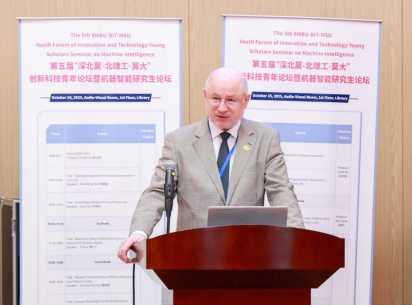
Ivanchenko delivered a welcome address to all attendees. He introduced the forum, founded in April 2023, as an open platform for exchanging insights and experiences across cutting-edge scientific fields. Academic exchanges from the forum have repeatedly led to tangible collaborative outcomes, such as the China-Russia Joint Laboratory on Nanostructured Optoelectronic Functional Materials and Devices and the Tri-University Joint Center for Applied Mathematics.
Focusing on this year’s theme of “Bioinformatics and Artificial Intelligence”, Ivanchenko highlighted the need to find breakthroughs at the intersection of biology, informatics, mathematics, and engineering to address the complex global challenges of today. These advances are expected to drive progress in medicine, ecology, and sustainable development. He emphasized that the three universities, with their rich experience and solid foundations in innovation, can combine their intellectual resources to jointly tackle complex problems. Ivanchenko noted that Professor Liu Bin has conducted fruitful collaborative research with Academician Alexey Shaytan, establishing a close partnership. The inauguration of the joint laboratory marks a deepening and upgrading of this collaboration. He expressed special gratitude to Professors Kitashov and Jia Yunde, and stated that the laboratory will serve as the foundation for joint undergraduate, master’s, and doctoral programs in the near future. The forum has become an effective platform for cross-cultural and interdisciplinary dialogue, strengthening partnerships between universities and countries. Ivanchenko expressed hope that this year’s forum would be an important step in building a close international scientific community, benefiting both nations and humanity as a whole, and serving as a springboard for intensive exchanges among experts in biology and engineering, generating more interdisciplinary projects and platforms.
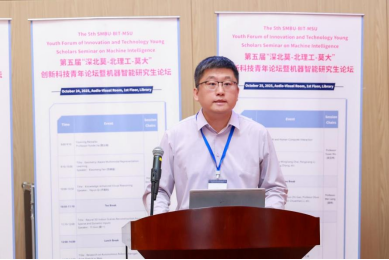
During the joint laboratory inauguration, Chinese Director Professor Liu Bin explained that the laboratory will integrate the core strengths of Shenzhen MSU-BIT, BIT, and MSU, with an initial focus on three research directions: “deciphering molecular mechanisms of complex diseases, intelligent mining of biological big data, and precise design of synthetic biological devices.”
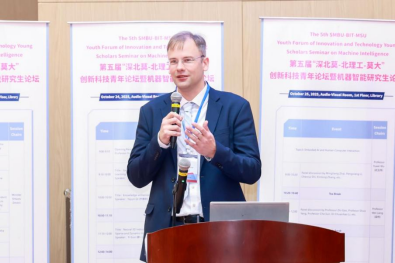
Russian Director Academician Alexey Shaytan stated that the Russian team will leverage Moscow State University’s strong foundation in life sciences to focus on “bioinformatics algorithm optimization and theoretical innovation in engineering biology”, promoting original research in decoding the genetic code and developing ecological protection technologies.
The laboratory was officially inaugurated by Li Hezhang, Ivanchenko, and six other leaders and guests.
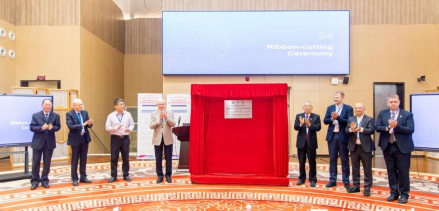
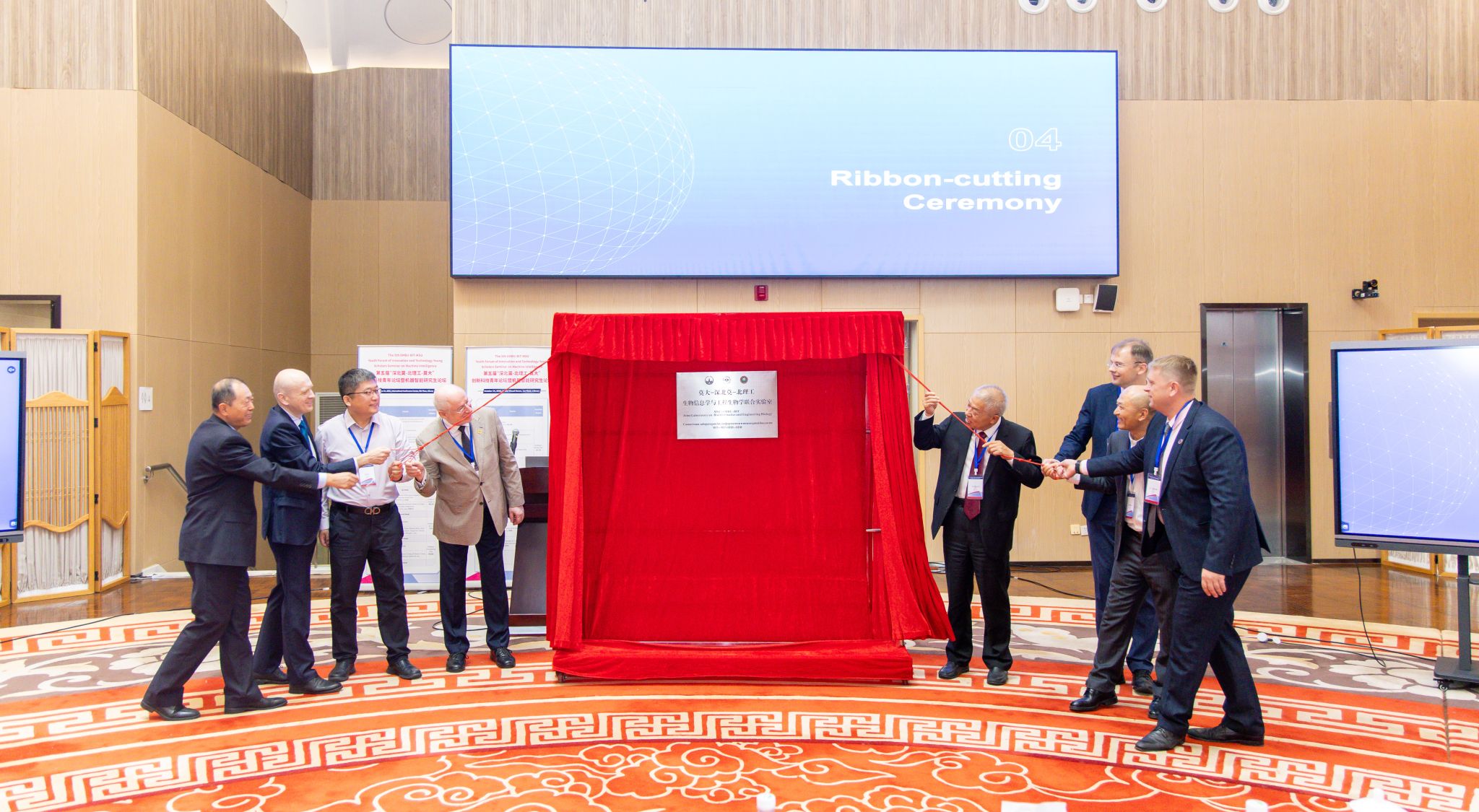
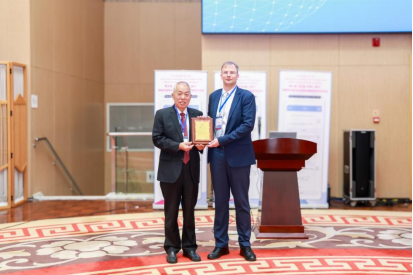
During the appointment ceremony, Guo Yanyi, Director of Human Resources, announced that Alexey Shaytan has been appointed Chief Scientist of the School of Engineering, with Li Hezhang presenting the official appointment certificate.

In his inaugural speech, Li Hezhang praised the laboratory’s establishment and expressed gratitude to all who contributed to making the collaboration possible. He emphasized that bioinformatics and engineering biology represent the forefront of today’s science, combining life sciences, information technology, and engineering techniques. This interdisciplinary field is decoding life’s genetic blueprint and driving technological revolutions in disease prevention, biomanufacturing, and ecological protection. Li Hezhang noted that from breakthroughs in genome sequencing to precision medicine, from synthetic biology exploration to innovative biomaterials, progress in this field is closely linked to human health, industrial upgrading, and national strategic needs. The tri-university collaboration aims to consolidate strength in this high ground of scientific innovation.
Li Hezhang highlighted that the construction of the laboratory integrates the unique strengths of each partner, representing a precise alignment of “fundamental research + interdisciplinary platforms + engineering applications” as well as a deep fusion of “international perspective + local practice + innovative capacity.” He emphasized that this complementary model will lay a solid foundation for the laboratory’s future development. Based on this, he outlined three key expectations: First, he hopes the laboratory will become a “source of academic innovation.” He expects the research teams from the three universities to use the laboratory as a platform, focus on core challenges in bioinformatics and engineering biology, and carry out original and forward-looking research. The goal is to produce high-level outcomes that can influence industry development and serve human welfare, making the laboratory a globally influential hub in the field. Second, he hopes the laboratory will become a “community for talent cultivation.” At the heart of research is talent, and the essence of collaboration lies in nurturing people. He envisions the three universities using the laboratory as a bridge to jointly offer courses, co-develop graduate programs, and share research resources. This will allow young scholars from China and Russia to exchange ideas, spark innovation, and cultivate interdisciplinary talent who are proficient in life sciences and information technology, while possessing international vision and innovative capability, thus building a talent reserve for the development of related fields both nationally and globally. Third, he hopes the laboratory will become “a new benchmark for international cooperation.”
The collaboration among the three universities is not only a continuation of Sino-Russian education and scientific exchange, but also a new model of cross-institutional and cross-national collaborative innovation. He looks forward to using the laboratory as a vehicle to further expand cooperative areas, refine collaboration mechanisms, and promote both research and talent exchange. Ultimately, the laboratory will serve as a bridge connecting the scientific and educational communities of China and Russia, offering a replicable model for global interdisciplinary and cross-border scientific collaboration.
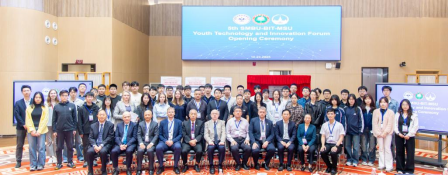

Following the opening ceremony, the forum moved to keynote presentations. Academician Alexey Shaytan delivered the keynote speech titled “Bioinformatics and Engineering Biology in the 21st Century: Opportunities and Challenges.” He presented an engaging report on the integration of artificial intelligence and life sciences, covering topics such as transformative changes in life sciences driven by the digital revolution, AI-powered protein prediction and design, genome function and chromatin structure simulation, and the future of synthetic biology. He emphasized that in facing global challenges such as food security, pollution, climate change, and aging populations, humanity must learn from nature’s atomic-level precision in manipulating matter and energy. “The next technological revolution will be a profound integration of information, biology, and intelligence.” He called on young researchers worldwide to explore boldly, innovate across disciplines, and usher in a new era where bioengineering and AI coexist symbiotically.
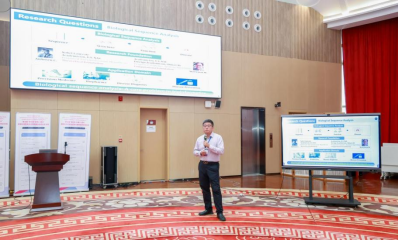
In his keynote presentation, Professor Liu Bin introduced the team’s newly developed biosequence pragmatic analysis method for studying peptide–protein interactions, KGIPA (Knowledge-Guided Interpretable Pragmatic Analysis). This achievement demonstrates the unique value of pragmatic analysis in life sciences research and marks the advent of a new stage in “biosequence analysis”. Additionally, the team has developed a comprehensive biosequence analysis platform, “Berg”, which integrates multiple functions including biosequence analysis, distant homolog detection, protein folding recognition, functional annotation, non-coding RNA analysis, and disease association studies.
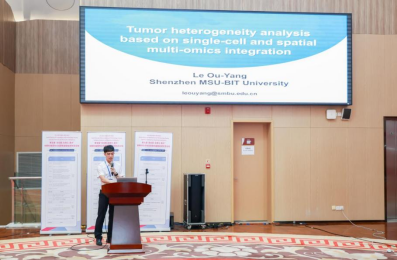
Professor Ouyang Le delivered a keynote entitled “Tumor Heterogeneity Driven by Multi-Omics and Spatial Omics: From Network Inference to Intelligent Integration.” He showcased the latest research progress in areas such as “From Tumor Heterogeneity Challenges to Systems Biology Paradigms,” “From Gene Network Inference to Multi-Omics Integration,” “Deep Modeling of Single-Cell and Spatial Omics,” and “Spatial Multi-Omics: A New Paradigm for Life Science Research.” He proposed four multi-modal data integration paradigms—horizontal integration, vertical integration, mosaic integration, and diagonal integration—emphasizing that the future of bioinformatics will rely on intelligent integration across omics, scales, and time. He called on young scholars to actively explore the intersection of artificial intelligence and bioinformatics, promoting the translation of computational methods from algorithmic innovation to clinical applications.